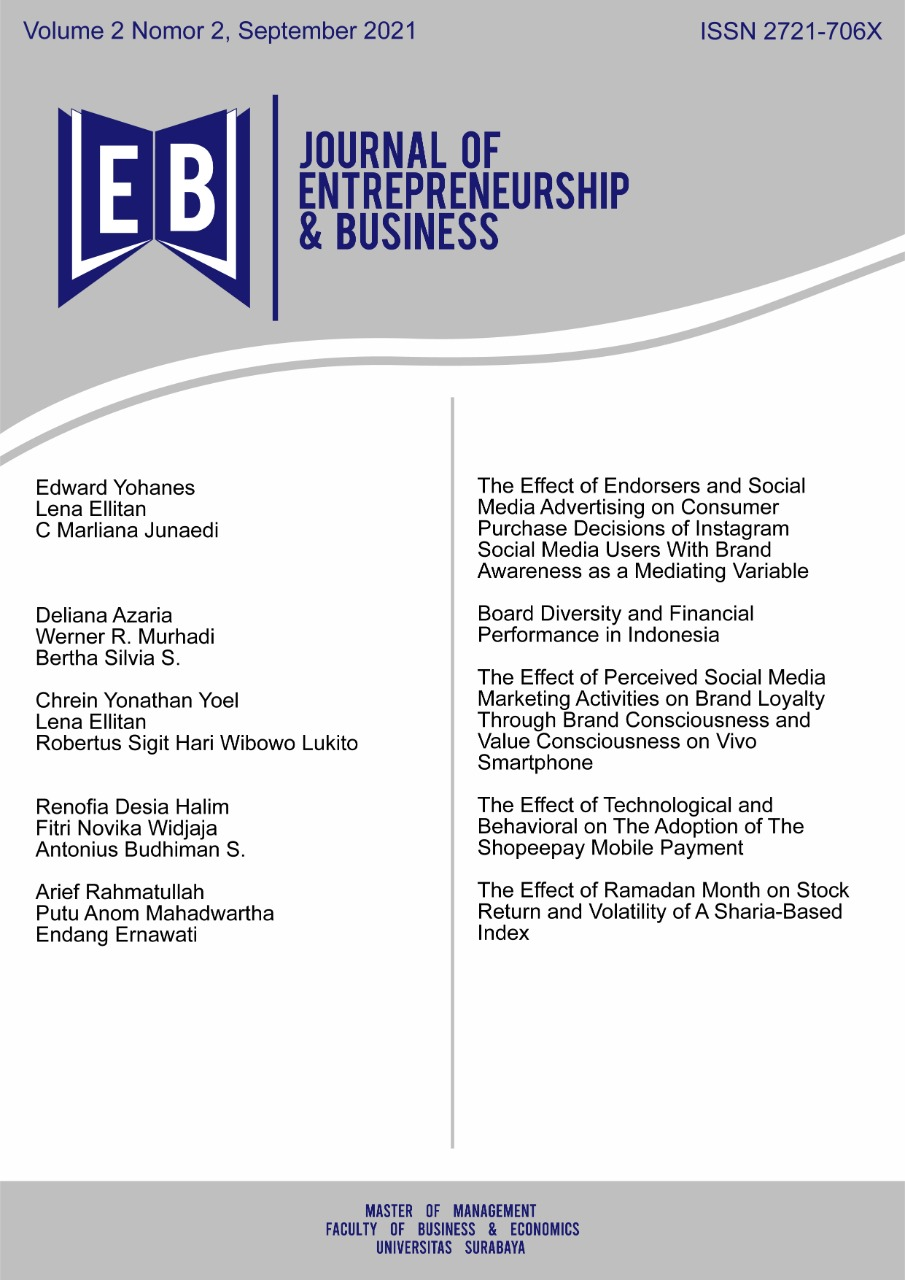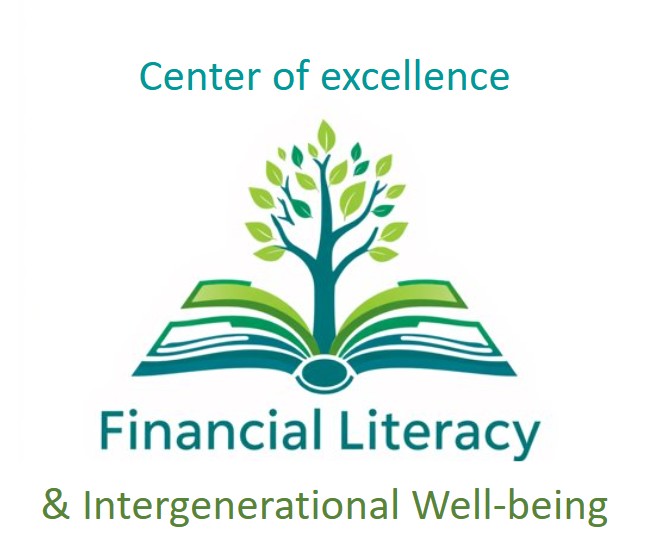The Effect of Ramadan Month on Stock Return and Volatility of A Sharia-based Index
 Abstract Views:
719 times
Abstract Views:
719 times
 PDF Downloads:
799 times
PDF Downloads:
799 times
Abstract
This study aims to examine the effect of a religious-related calendar anomaly, namely Ramadan, on stock return and volatility of a Sharia-based index in Indonesia. This study used the GARCH (p,q) method and linear regression to examine the effect of Ramadan on stock returns and volatility, with Ramadan as a dummy variable. This study results show that Ramadan month has a significant positive effect on stock returns, or it can be said that an anomaly occurs during Ramadan month. Meanwhile, volatility during Ramadan month is negative and not significant. This study also exercised a T-test to support the GARCH regression (p,q) and linear regression results. The t-test results show that the average return during Ramadan is higher than in other months. Meanwhile, the average volatility during Ramadan is lower than in other months.
Downloads
References
Al-Ississ, M. (2015), The Holy Day Effect, Journal of Behavioral and Experimental Finance,5, March, 60-80.
Al-Ississ, M. (2010), The Impact of Religious Experience on Financial Markets. Working Paper. Harvard Kennedy School of Government.
Al-Hajieh, H., Redhead, K., and Rodgers, T. (2011), Investor Sentiment and Calendar Anomaly Effects: A Case Study of the Impact of Ramadan on Islamic Middle Eastern Markets, Research in International Business and Finance, 25 (3), 345-356.
Al-Khazali, O., Bouri, E., Roubaud, D., & Zoubi, T. (2017), The Impact of Religious Practice on Stock Returns and Volatility, International Review of Financial Analysis, 52, July, 172-189.
Annila, N. & Kristanti, F.T. (2015), Model GARCH (Generalized Autoregressive Conditional Heteroscedasticity) Untuk Prediksi dan Akurasi Harga Saham Masa Depan, e-Proceeding of Management, 2(1), 255-266.
Bialkowski, J., Etebari, A., and Wisniewski, T.P. (2012), Fast Profits: Investor Sentiment and Stock Returns during Ramadan, Journal of Banking & Finance,36 (3), 835-845.
Gavrilidis, K., Kallinterakis, V., and Tsalavoutas, I. (2016), Investor Mood, Herding and the Ramadan Effect, Journal of Economic Behavior and Organization, 132 (supplement), 23-28.
Habib bin Hilal. (n.d), Kalender Islam, https://www.al-habib.info/kalender-islam/
Husain, F. (1998), A Seasonality in the Pakistan Equity Market: the Ramadan Effect, The Pakistan Development Review, 37(1), 77 – 81.
KSEI. (2018), Unduh Kepemilikan Efek, https://www.ksei.co.id /archive_download/holding_composition
Lai, Y., & Windawati. A. (2017), Risk, Return and Liquidity during Ramadan: Evidence from Indonesian and Malaysian Stock Markets, Research in International Busines and Finance, 42(December), 233-241.
Oguzsoy, C.B., and Guven, S. (2004), Holy Days Effect on Istanbul Stock Exchange. Journal of Emerging Market Finance, 3(1), 63-75.
Sonjaya, A.R., & Wahudi. I. (2016), The Ramadan Effect: Illusion or Reality?, Arab Economic and Business Journal, 11(1), 55-71.
Wasiuzzaman, S., & Al-Musehel, N.A. (2017), Mood, Religious Experience and the Ramadan Effect, International Journal of Emerging Markets, 13(1), 290-307.

This work is licensed under a Creative Commons Attribution 4.0 International License.
Articles published in Journal of Entrepreneurship & Business are licensed under a Creative Commons Attribution 4.0 International (CC BY) license. You are free to copy, transform, or redistribute articles for any lawful purpose in any medium, provided you give appropriate credit to the original author(s) and the journal, link to the license, and indicate if changes were made.
Authors submitting to this journal agree to make their work freely available under the CC BY 4.0 license, ensuring broad dissemination and reuse. The full license details can be accessed at https://creativecommons.org/licenses/by/4.0/.
This ensures that they receive the maximum dissemination because there are no barriers to access. This license allows readers to disseminate and reuse the paper, but always requires them to grant the authors and the first publication full credit.
While JEB upholds ethical publishing standards, the responsibility for ensuring originality and compliance with copyright regulations lies with the authors. The journal is not liable for any legal claims related to the content of published articles.
For further inquiries, please contact the editorial team.

 DOI:
DOI:











